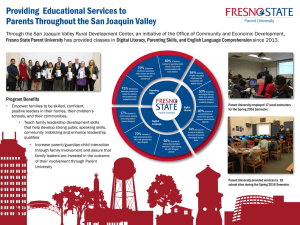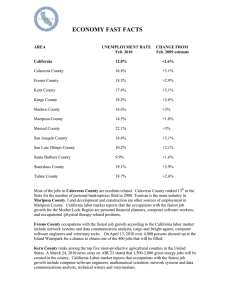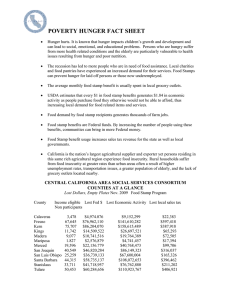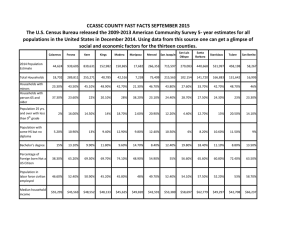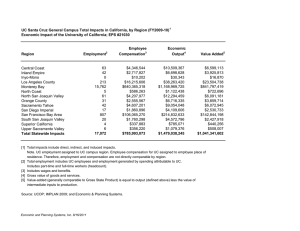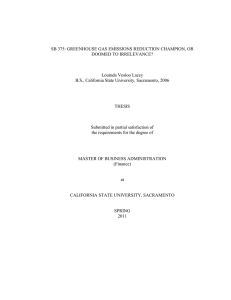EDUCATION AND POVERTY FAST FACTS
advertisement
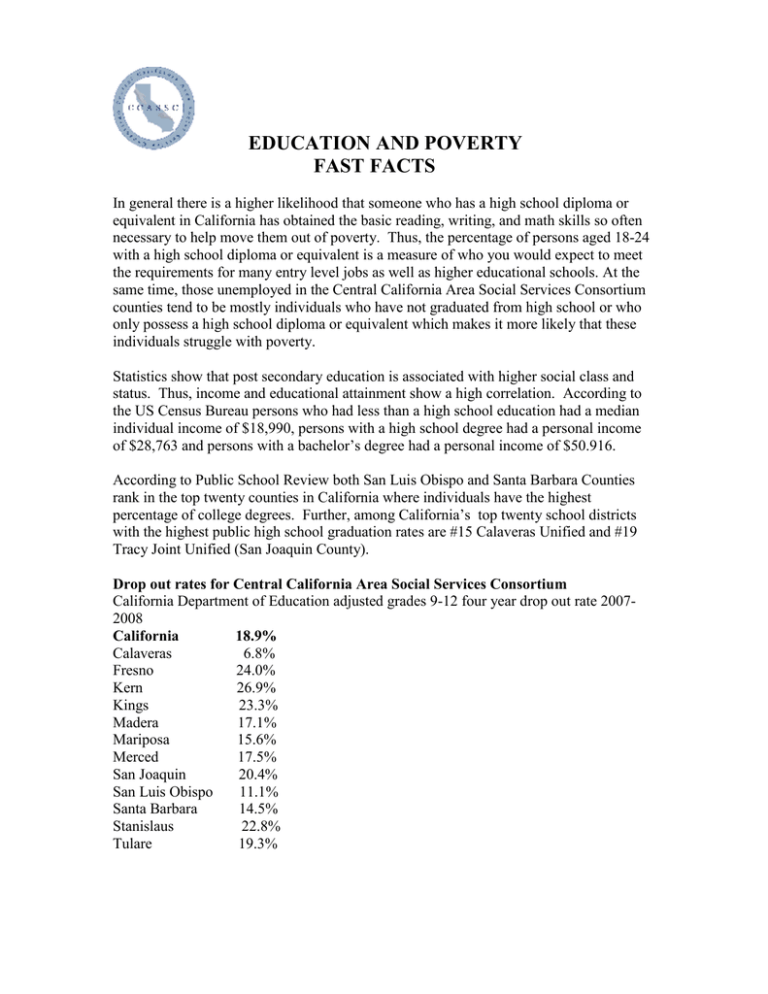
EDUCATION AND POVERTY FAST FACTS In general there is a higher likelihood that someone who has a high school diploma or equivalent in California has obtained the basic reading, writing, and math skills so often necessary to help move them out of poverty. Thus, the percentage of persons aged 18-24 with a high school diploma or equivalent is a measure of who you would expect to meet the requirements for many entry level jobs as well as higher educational schools. At the same time, those unemployed in the Central California Area Social Services Consortium counties tend to be mostly individuals who have not graduated from high school or who only possess a high school diploma or equivalent which makes it more likely that these individuals struggle with poverty. Statistics show that post secondary education is associated with higher social class and status. Thus, income and educational attainment show a high correlation. According to the US Census Bureau persons who had less than a high school education had a median individual income of $18,990, persons with a high school degree had a personal income of $28,763 and persons with a bachelor’s degree had a personal income of $50.916. According to Public School Review both San Luis Obispo and Santa Barbara Counties rank in the top twenty counties in California where individuals have the highest percentage of college degrees. Further, among California’s top twenty school districts with the highest public high school graduation rates are #15 Calaveras Unified and #19 Tracy Joint Unified (San Joaquin County). Drop out rates for Central California Area Social Services Consortium California Department of Education adjusted grades 9-12 four year drop out rate 20072008 California 18.9% Calaveras 6.8% Fresno 24.0% Kern 26.9% Kings 23.3% Madera 17.1% Mariposa 15.6% Merced 17.5% San Joaquin 20.4% San Luis Obispo 11.1% Santa Barbara 14.5% Stanislaus 22.8% Tulare 19.3% The California Dropout Research Project has found that dropout rates lead to economic losses to the State. Dropouts create higher welfare rolls, and these juveniles often end up as part of the juvenile justice system. There have been several studies that tend to support the idea that if the dropout rate was reduced, it would also end up reducing juvenile crime. Truancy Rate for Central California Area Social Services Consortium Counties: California Department of Education Expulsion, Suspension, and Truancy Information report for 2008-2009 California 24.15% Calaveras 18.92% Fresno 33.02% Kern 30.17% Kings 28.33% Madera 29.35% Mariposa 35.3% Merced 34.1% San Joaquin 28.53% Santa Barbara 27.02% Stanislaus 23.63% Tulare 23.48% Truancy rates generally indicate the percentage of students who have been absent from school without a valid excuse for a specific amount of time as specified in the Education Code. The economy in the state requires an educated as well as prepared workforce. Often those who are truant are also among those who are doing poorly in school and many in fact end up dropping out. This loss of education really costs our society as well as the individuals, who over their lifetime are more likely to be among those persons living in poverty. According to the US Census Bureau, the greatest percentage of persons with the lowest educational attainment identified themselves as either Hispanic or Latino. Also Census figures show that those persons working in the agriculture field were the least educated among all the listed professions. Jared Bernstein, a senior economist at the Economic Policy Institute has noted that education as well as focused job training for adults is needed to improve the numbers of persons who live in poverty. It is important to educate and train persons for jobs that are in demand in their own community otherwise they will not be successful in improving their economic state. According to the Bureau of Labor Statistics job growth is expected to take place in many low paying jobs that require little training/education and while many persons will find employment, their salaries will not be enough to move them out of poverty. School districts throughout the region are struggling to maintain services in order to educate our youth. State funding has been cut and in some communities enrollment has declined. Community colleges and public four year colleges are also seeing an increased demand for enrollment at the same time they are facing budget cuts. Thus, individuals may not be able to obtain the education that they want in order to help them up the economic and status ladder.
